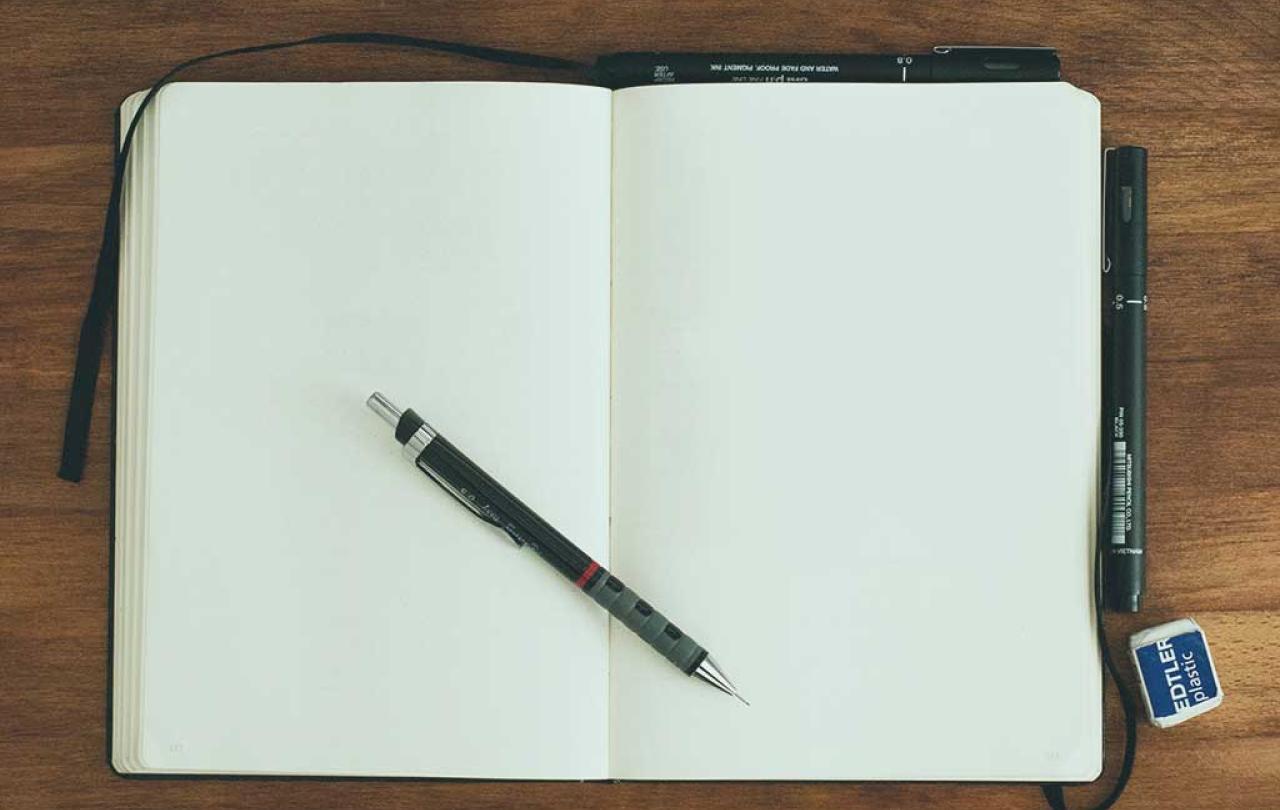
The famed anxiety inducing nemesis of any writer or creative, the ever-daunting blank page. Well, I’ve bought myself a new notebook, so I have a literal open page in front of me, but also something more.
I’m starting a three-month sabbatical from my role as a Baptist minister. Stepping down from my day-to-day responsibilities of work, but also, to a degree, away from the basic structures that define my life; the people, purpose and rhythm of, not only what I do, but who I am. It’s a weird sort of job like that.
What would you do with three months off? From work, family commitments, whatever it is that defines your day to day ordinarily? Well, buy a notebook, obviously, but after that?
I’m conscious, of course, that this is a rare privilege, a consequence, I guess, of the strange link between a professionalised clergy and academia from days past, but also, a recognition of the all-encompassing nature of the role. Maybe, because of that, it’s also a real challenge, a true ‘blank page’.
The first instinct, I guess, is to take a break, to stop, to breathe. That’s undeniably good, but how long for? Is that it? At what point does stopping and breathing become lazy indulgence? I’ve been reading quite a lot lately, perhaps subconsciously preparing for these months, about taking time out, resting, slowing down. Often, these thoughts have been expressed as an exploration of the notion of ‘Sabbath’ that Judeo-Christian notion of keeping a period of time, a day a week, special, sacred even. This, of course, is the route from which ‘sabbaticals’ have grown, not so much the ivory towers and quadrangles after all, but more the Hebrew prophets and itinerant Jewish preachers of ancient days, seeking to find the rhythms of a fulfilled life There’s John Mark Comer’s ubiquitous The Ruthless Elimination of Hurry, which seems to have touched a cultural nerve, but also Ruth Haley Barton’s Invitation to Solitude and Silence. Then, out of the blue, I was invited to reflect again on Walter Brueggemann’s sense of Sabbath as:
‘the refusal to let one’s life be defined by production and consumption, and the endless pursuit of private well-being’.
He also observed that, recognizing just how we, like multiple generations before us, each in their own way, are utterly enmeshed in systems and structures designed, not so much for our well-being but rather the benefit of others,
‘the departure into restfulness is both urgent and difficult, for our motors are set to run at brick-making speed.’
(A reference to one of those earliest structures, highlighted in the Bible, where Egypt’s Pharaoh had Hebrew slaves building ever larger structures, to assuage their growing thoughts of freedom.)
Most recently of all, I’ve been struck, by following Pete Grieg’s pilgrimage walk from Iona to Lindisfarne, and the passing comment that the original Celtic monks, in making the same journey, eschewed the offer of horses to ride, preferring to walk, fearing that the increased pace of travel might cause them to miss something.
I’m sure I’ve missed lots, I’m convinced I’m caught up in a whole range of hectic, consumerist structures, and I’m often tired, so rest, gets a big tick from me. At least I think it does, but barely do I sit down, and I’m feeling restless again. How long can/should I keep this up? There are so many things to do, opportunities to explore, people to please. I need to justify this privilege of time and space.
His speaking, his marching, his campaigning and protesting, even his sitting, was driven with a passion and an urgency that was infectious, and effective.
And then there’s that ever-present sense within me, my natural instinct if you will, true, I’m sure, of many. That I like the idea of contemplation, the need for it even, but, actually, I’m more driven by activism, by getting stuff done. The focal point of my whole break, planned for quite a while now, is a trip to the USA to follow the life of one of my spiritual heroes, Rev. Dr. Martin Luther King. Now, there’s an activist if ever there was one. His speaking, his marching, his campaigning and protesting, even his sitting, was driven with a passion and an urgency that was infectious, and effective. His consistent rage against injustice has been a call to arms, both to his immediate contemporaries, and generations subsequently, to get up, go out and do. Ultimately, of course, he poured out his whole life in the cause. It’s taking me an age to read a few preparatory biographies of him, stimulated as I am from every page, challenged to act, to never let injustice rule while I have voice and agency.
So, there we have it, another paradox, in the complicated business of being the person I’m meant to be, realizing the best of God’s investment in me. The conflict between rest and exploration, being and doing, contemplation and activism. I imagine we are all drawn to a certain place on that spectrum.
Blank pages, freed up days and diaries, only serve to underline what we already are. But, I suspect, we can all also hear the call to either end of the range; to be stirred to action by the things that break the heart of God, and to lay down our burdens, take upon ourselves the easier yoke, and live increasingly in ‘the unforced rhythms of grace’. Maybe, to start with at least, listening to that call, recognizing the tension, while not allowing it to create pressure in us, is enough. Hearing, praying, scribbling my first, semi coherent, thoughts on that vast empty page, making myself another coffee, and wondering what I might do next.





